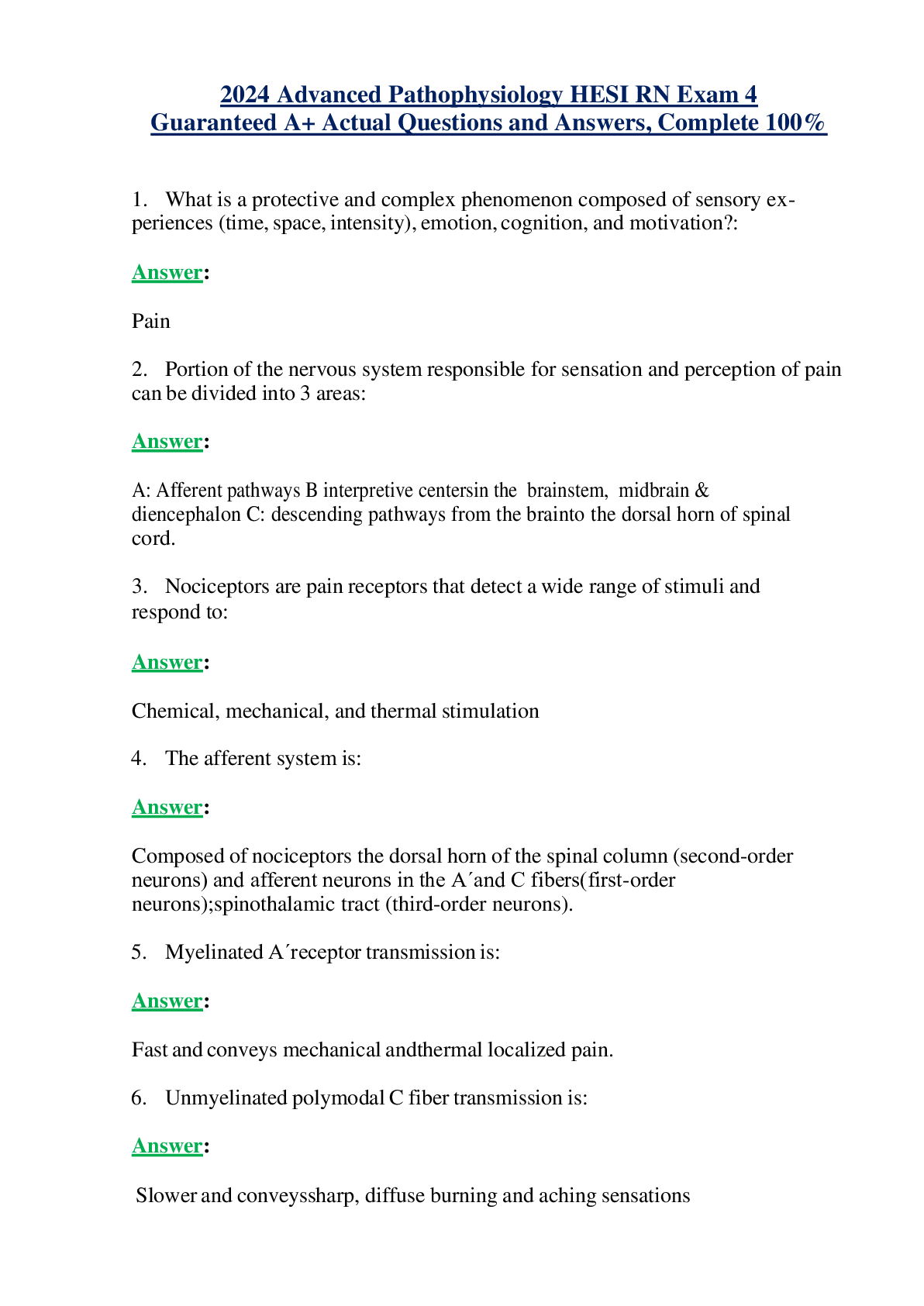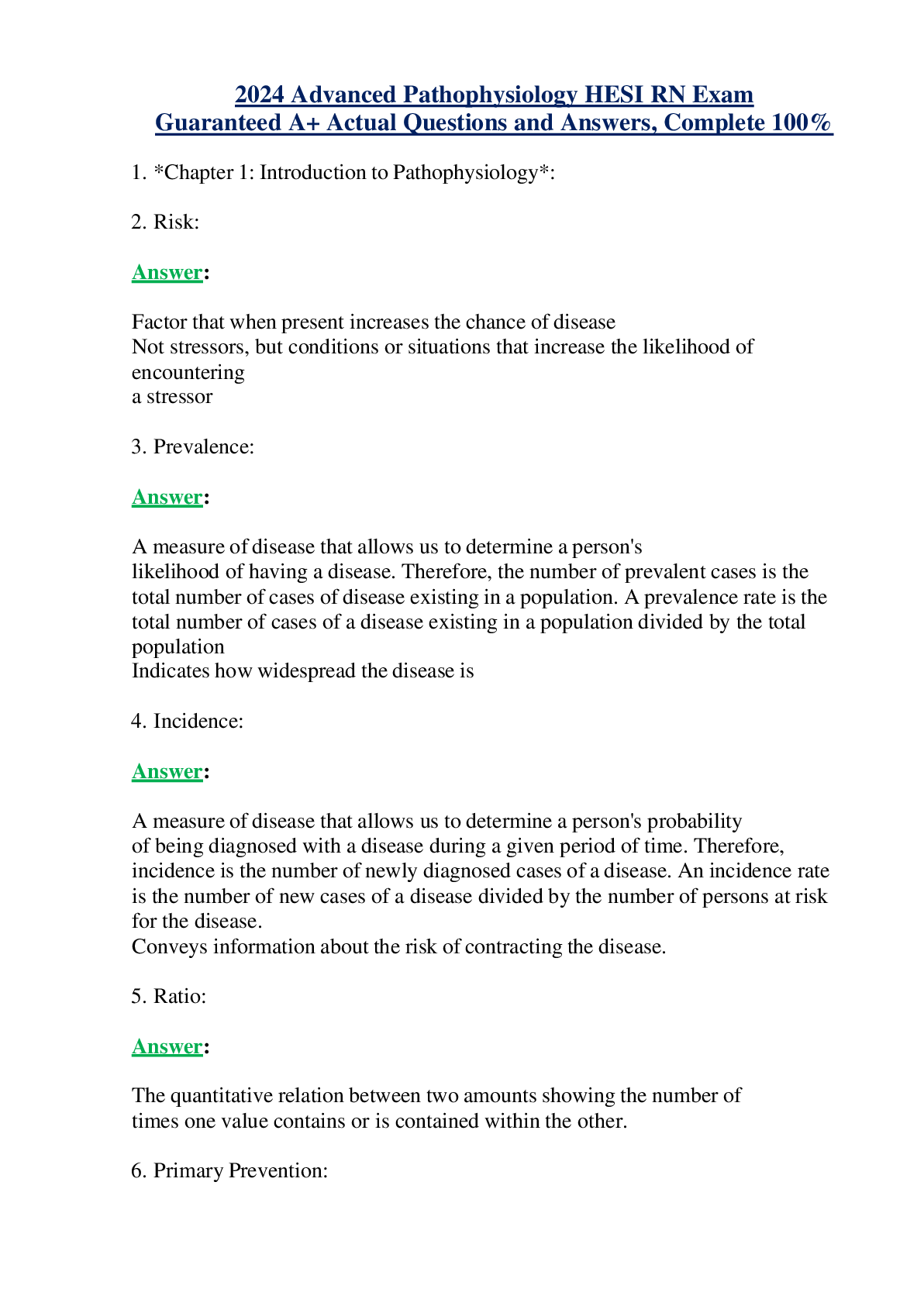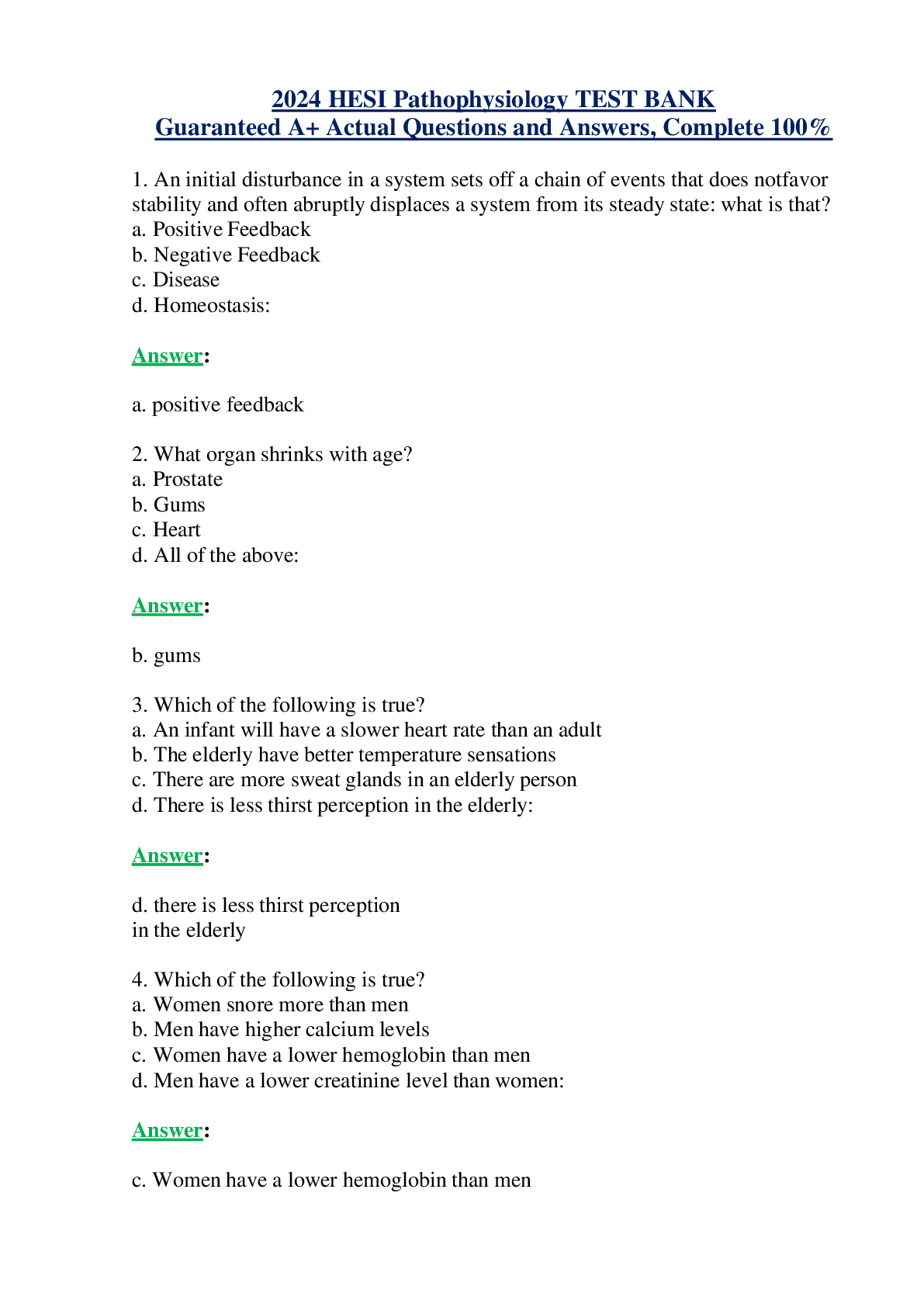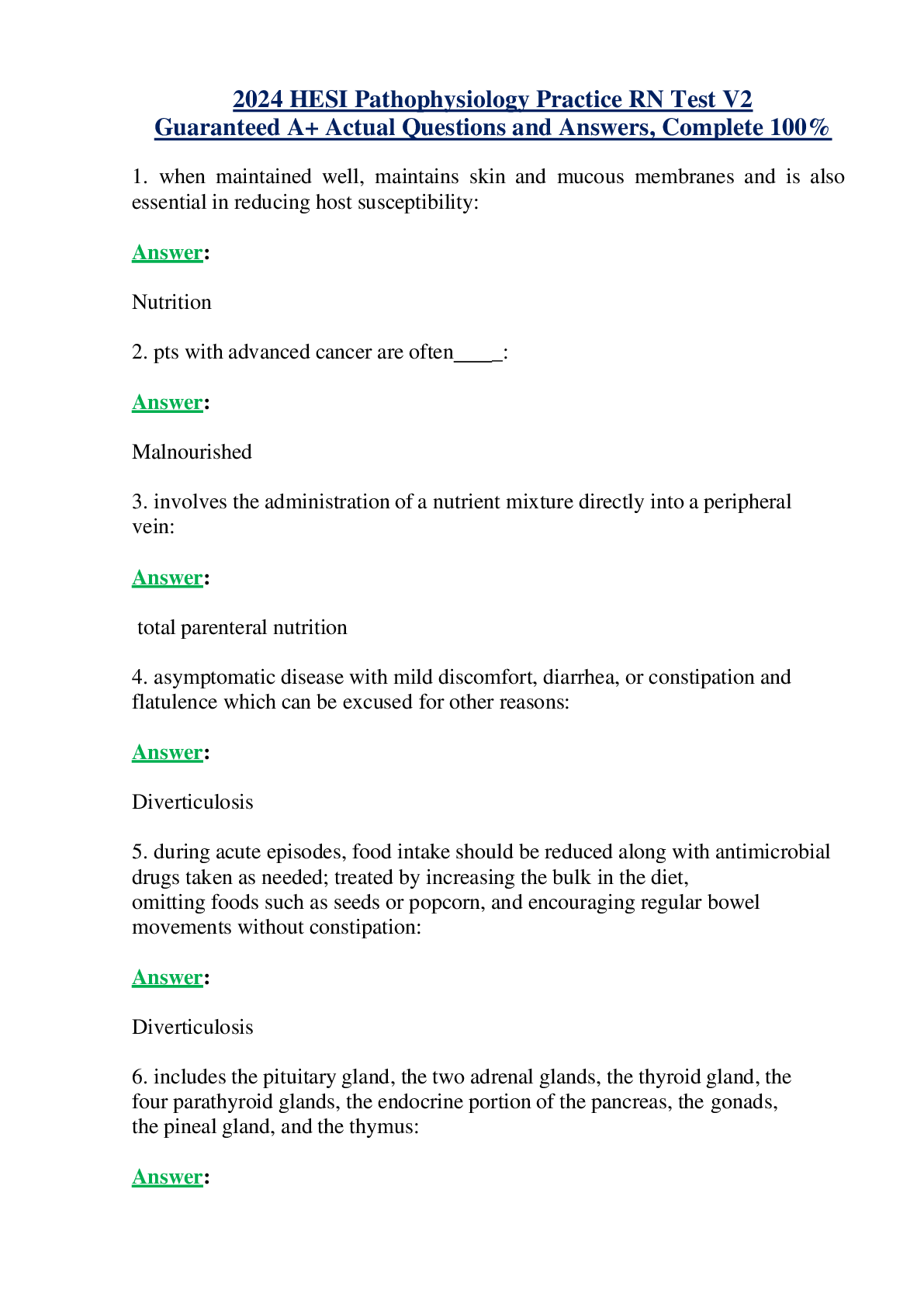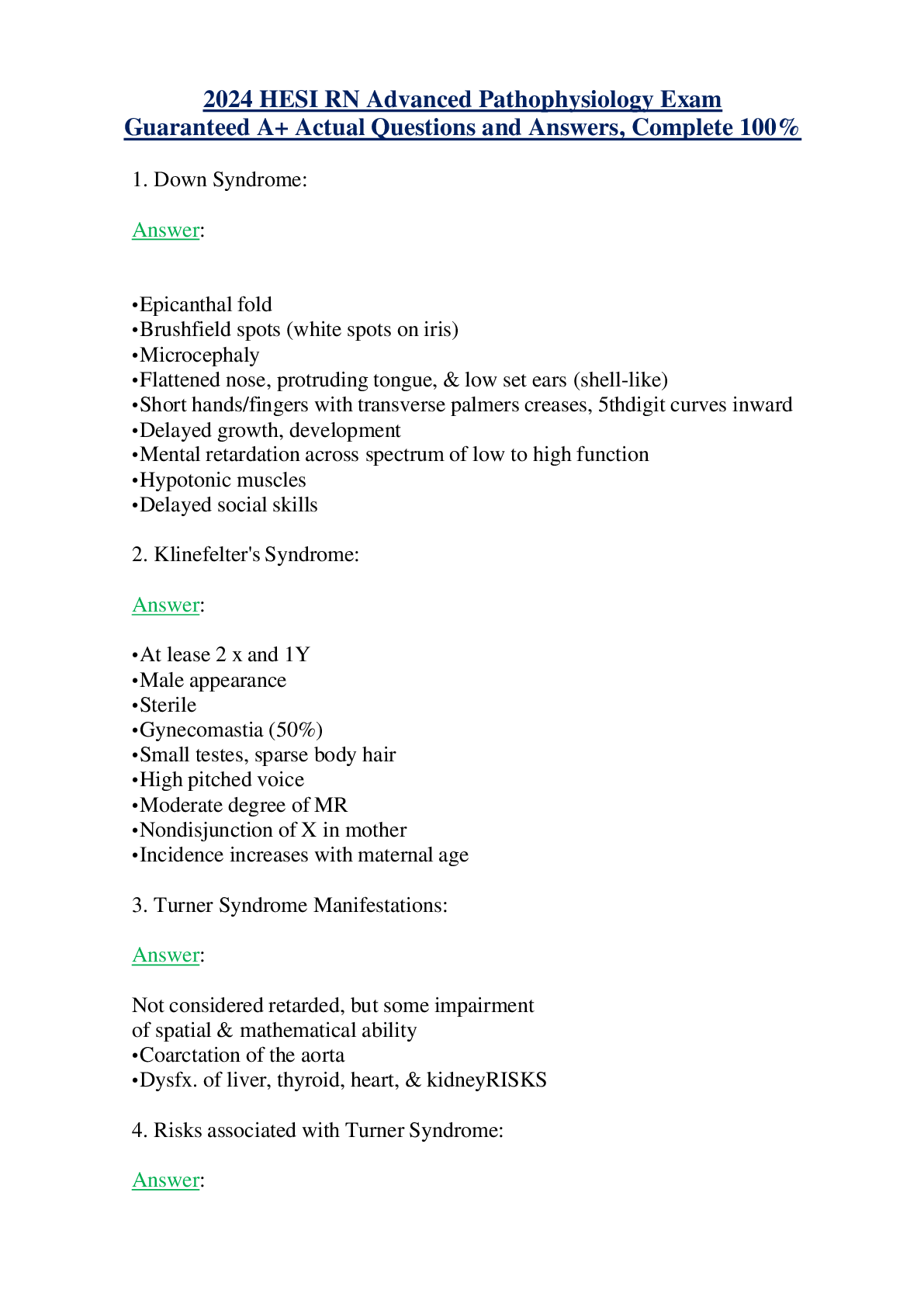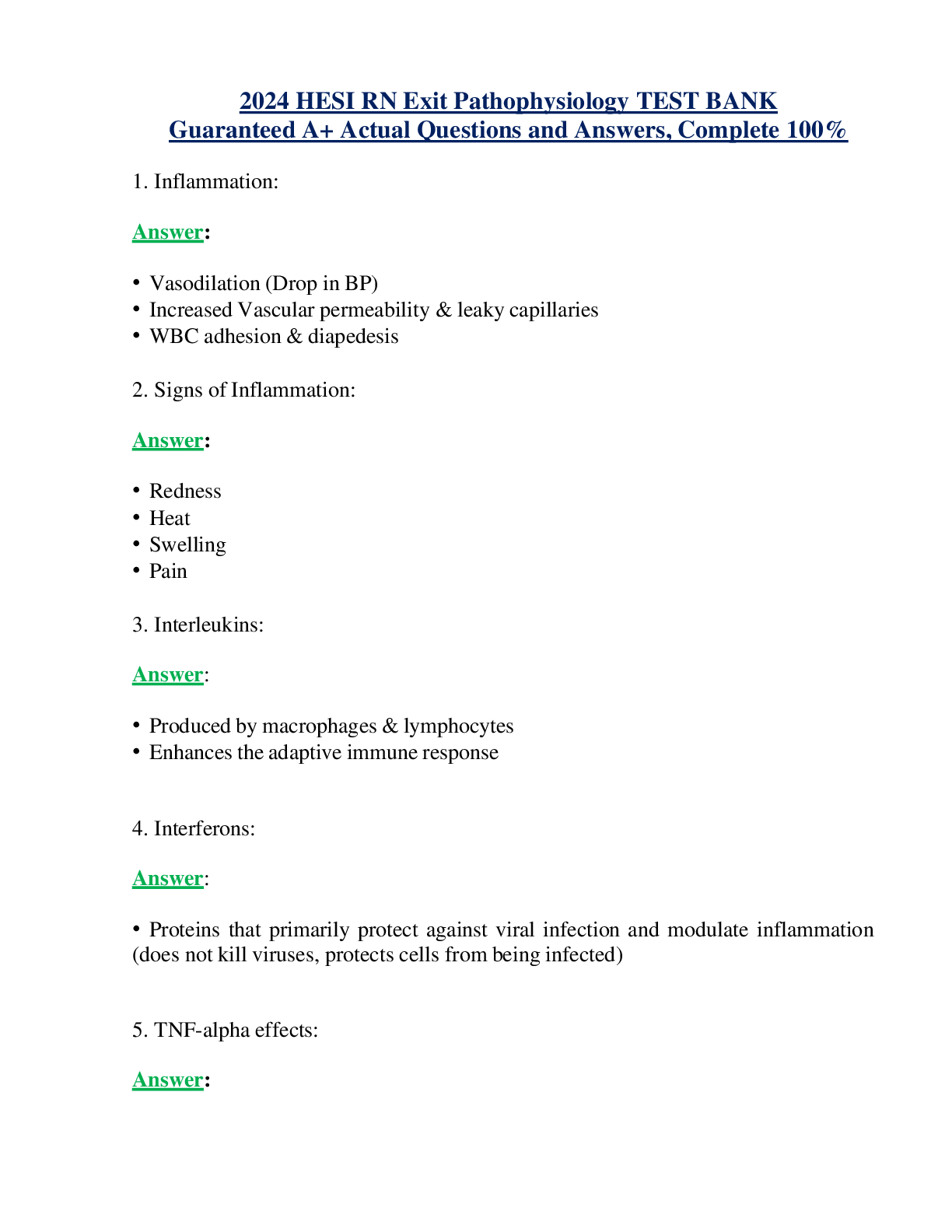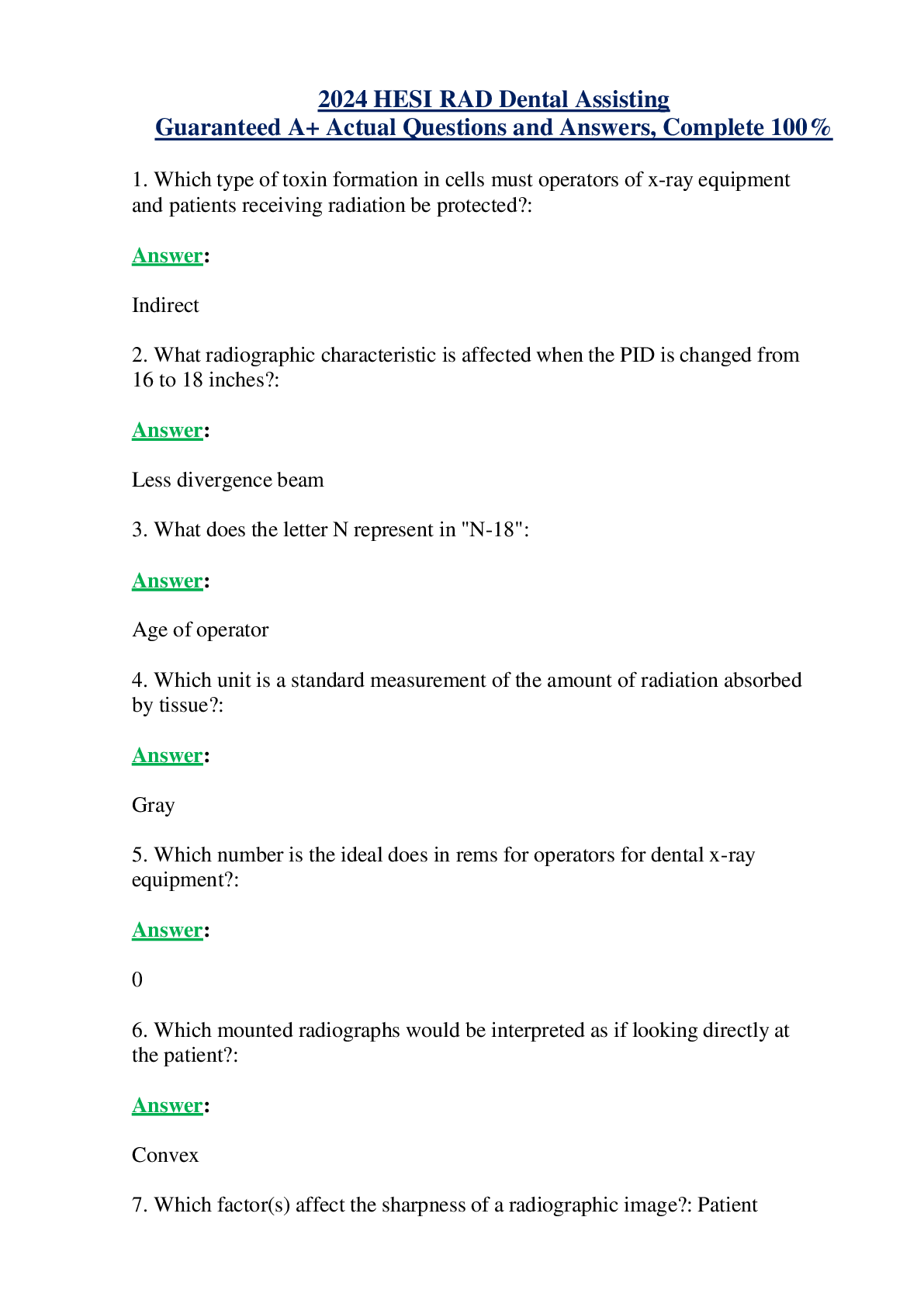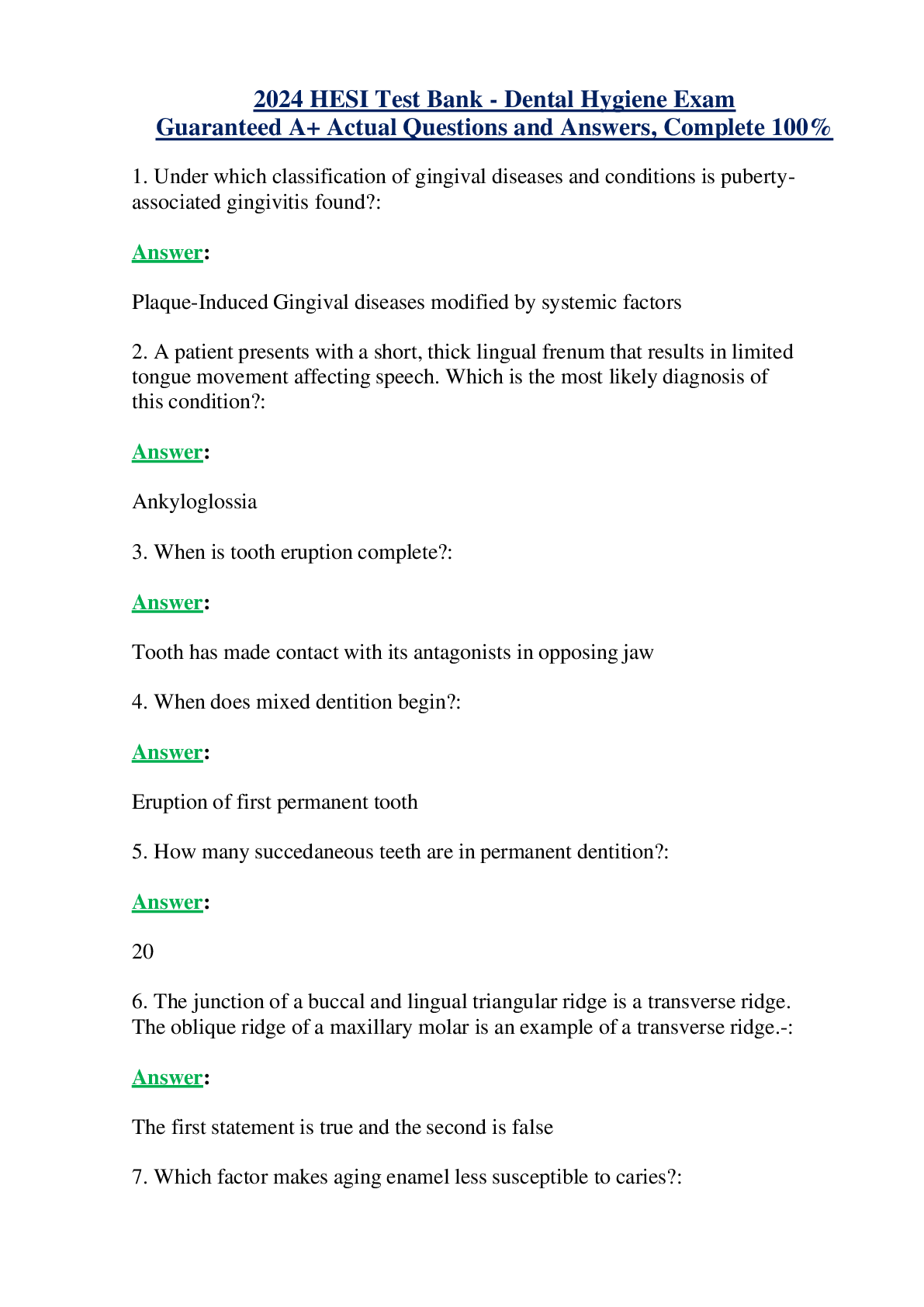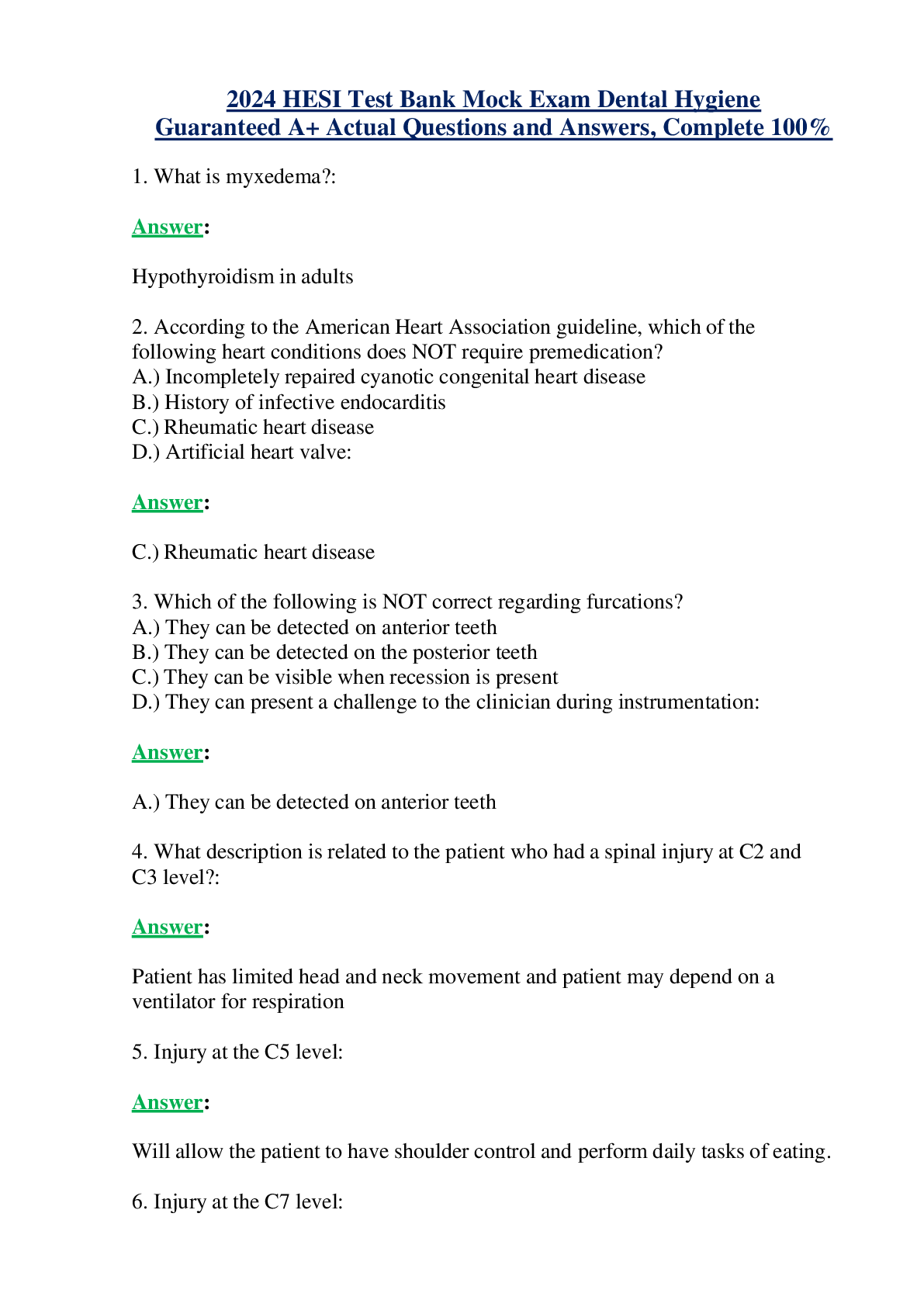HESI > HESI > 2024 HESI Pathophysiology Practice Test Guaranteed A+Actual Questions and Answers, Complete 100% (All)
2024 HESI Pathophysiology Practice Test Guaranteed A+Actual Questions and Answers, Complete 100%
Document Content and Description Below
1. After talking w/ the HCP, a male pt continues to have questions about the results of a prostatic surface antigen (PSA) screening test and asks the nurse how the PSA levels become elevated. The nu... rse should explain which pathophysiological mechanism?: Answer: As the prostate gland enlarges, its cells contribute more PSA in the circulating blood PSA is a glycoprotein found in prostatic epithelial cells, and elevations are used as a specific tumor markers. Elevations in PSA are r/t gland volume, ie. benign BPH, prostatitis, and cancer of the prostate, indicating tumor cell load. PSA levels are also used to monitor response to therapy 2. A 26 yr old male client w/ Hodgkin's disease is scheduled to undergo radiation therapy. The clinet expresses concern about the effect of radiation on his ability to have children. What info should the nurse provide?: Answer: Permanent sterility occurs in the male client who receive radiation Low sperm count and loss of motility are seen in males w/ Hodgkin's disease b/f any therapy. Radiotherapy often results in permanent aspermia, or sterility 3. The nurse hears short, high-pitched sounds just b/f the end of inspiration in the right and left lower lobes when auscultating a client's lungs. How should this finding be recorded?: Answer: Crackles in the right and left lower lobes Fine crackles - short, high-pitched sounds heard just b/f the end of inspiration that are the result of rapid equalization of pressure when collaped alveoli or terminal bronchioles suddenly snap open Wheezing is a continuous high-pitched squeaking or musical sound caused by rapid vibration of bronchial walls that are 1st evident on expiration and may be audible 4. A client is admitted to the ER w/ a tension pneumothorax. Which assessment should the nurse expect to ID?: Answer: A deviation of the trachea toward the side opposite of the pneumothorax Tension pneumothorax is caused by rapid accumulation of air in the pleural space, causing severely high intrapleural pressure. This results in collapse of the lung, and the mediastinum shifts toward the unaffected side, which is subsequently compressed [Show More]
Last updated: 3 months ago
Preview 1 out of 12 pages
Instant download

Buy this document to get the full access instantly
Instant Download Access after purchase
Add to cartInstant download
Reviews( 0 )
Document information
Connected school, study & course
About the document
Uploaded On
Mar 14, 2024
Number of pages
12
Written in
Additional information
This document has been written for:
Uploaded
Mar 14, 2024
Downloads
0
Views
13


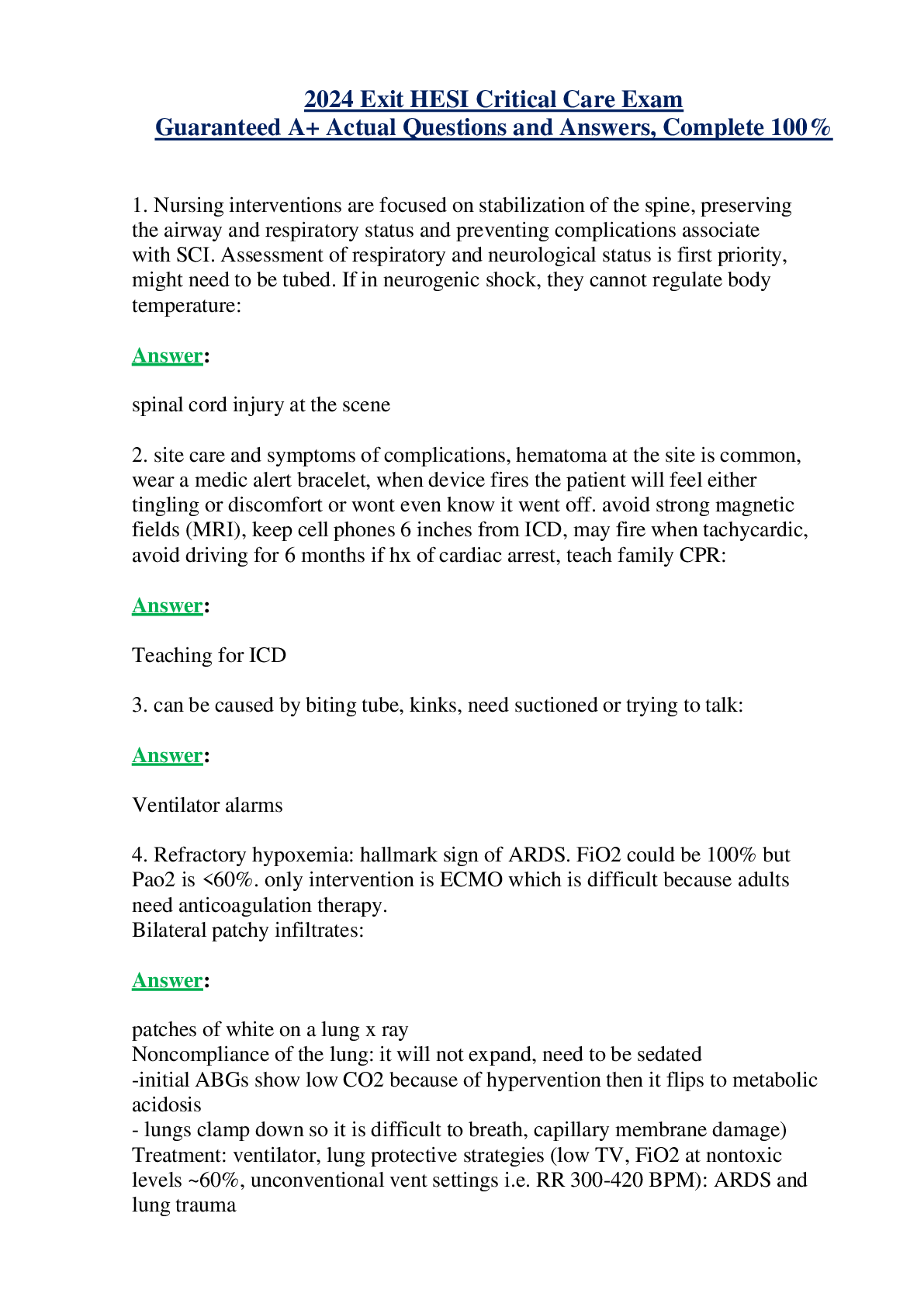
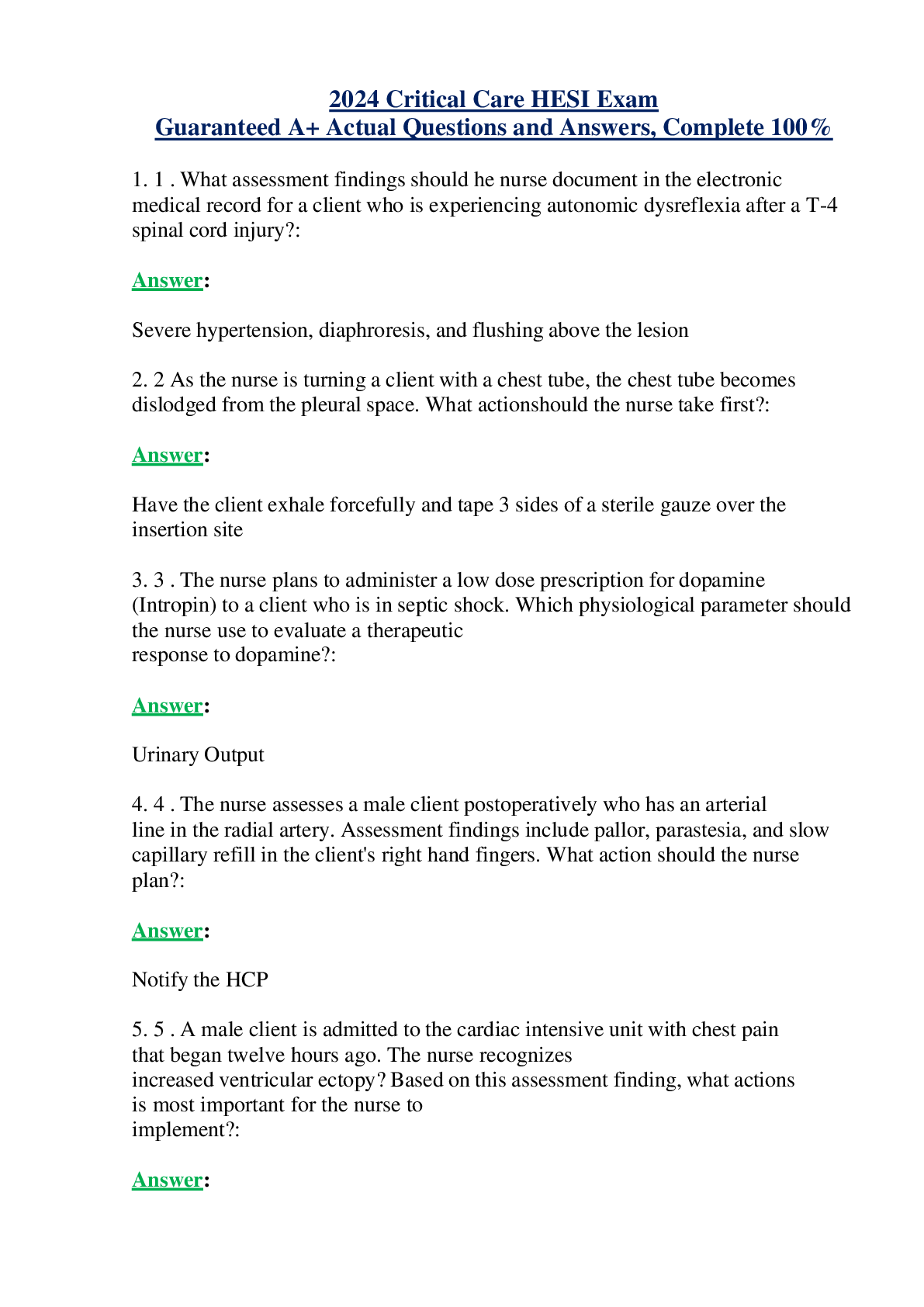
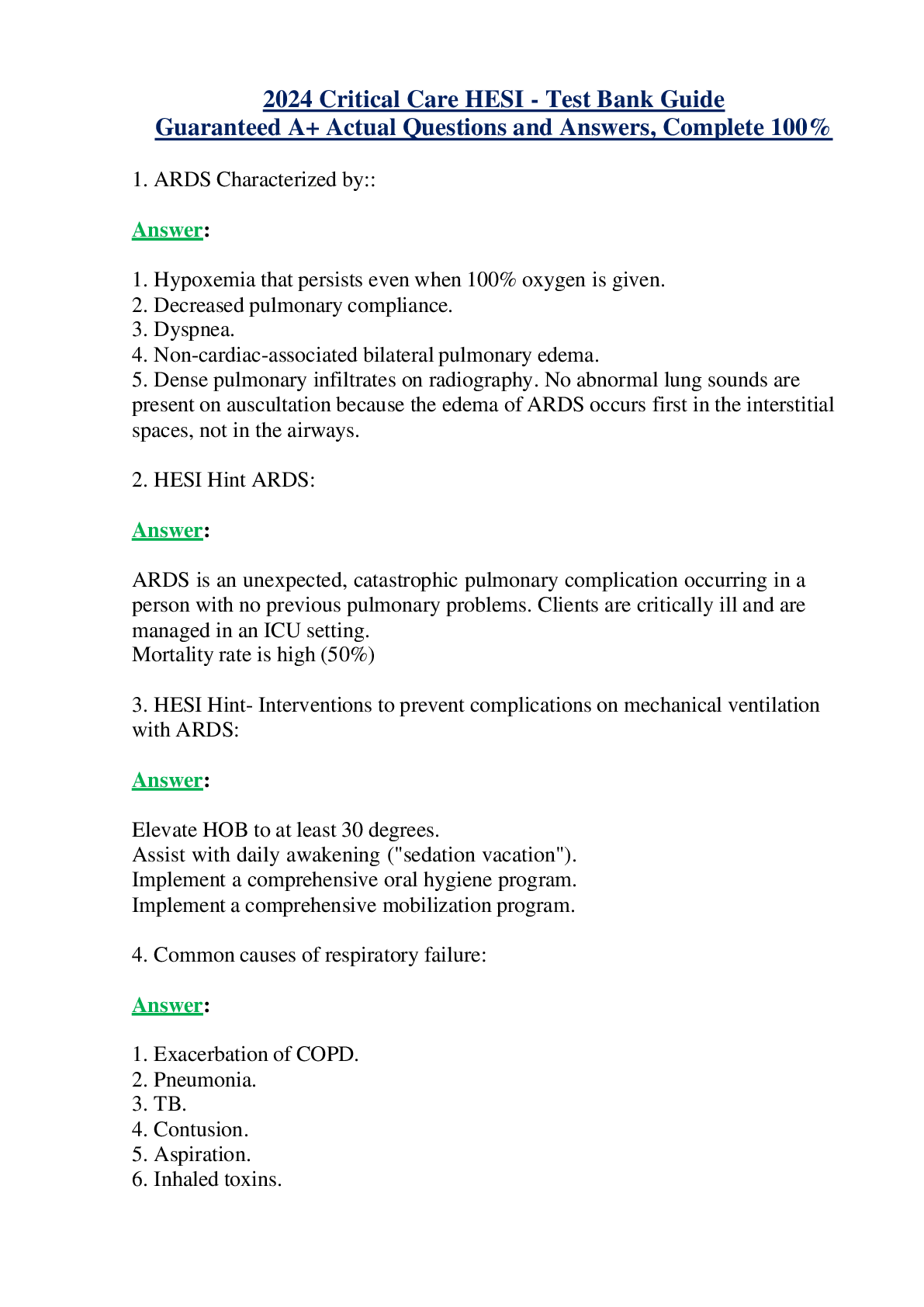
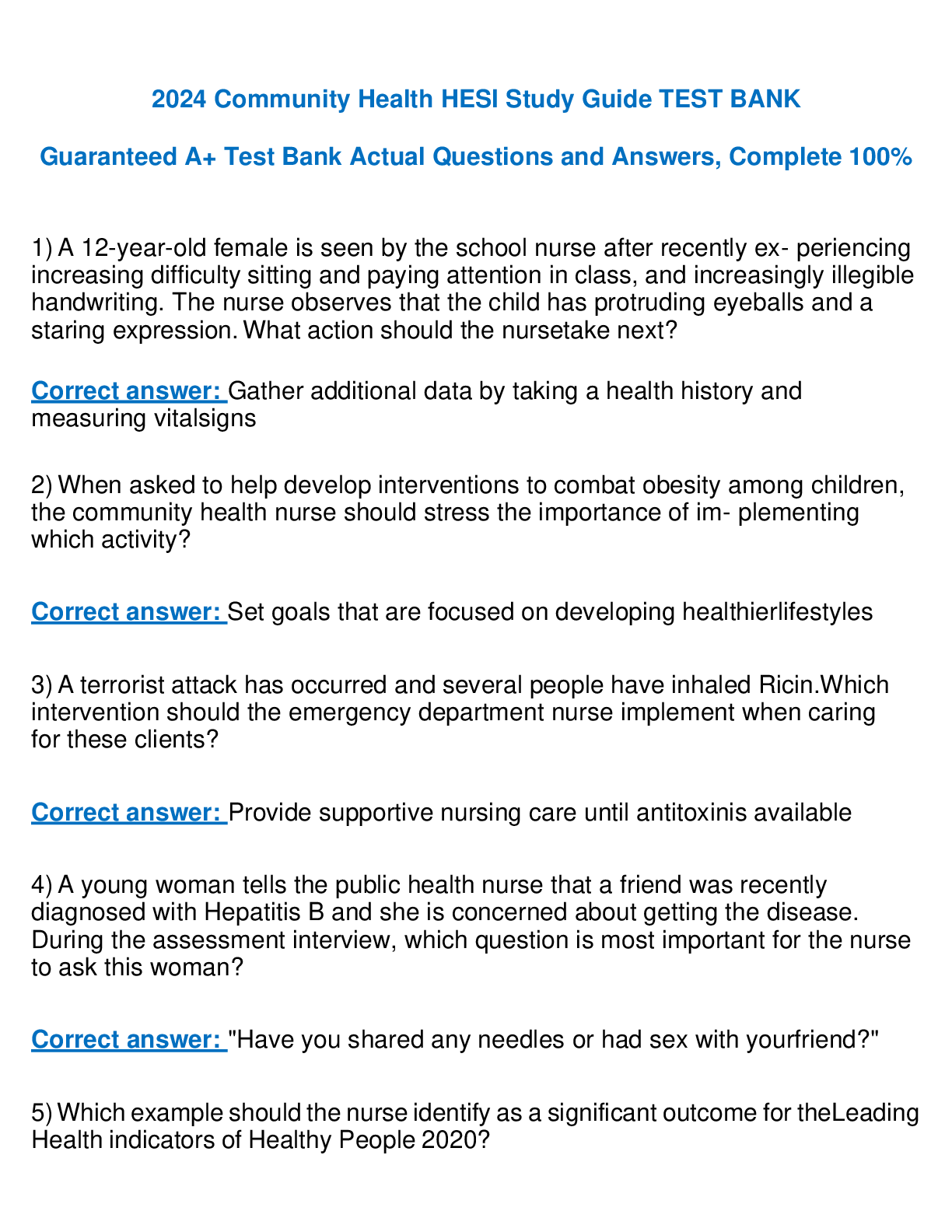
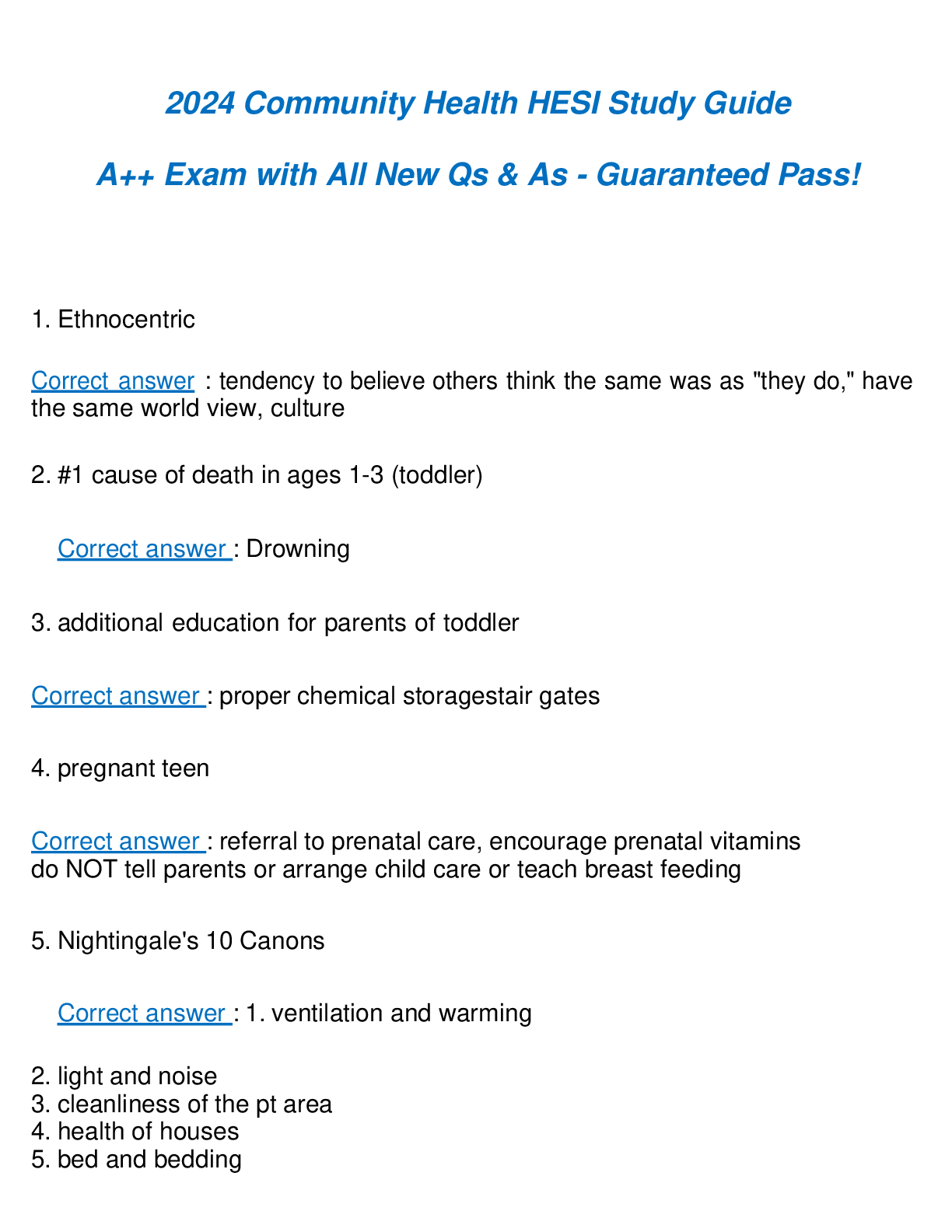
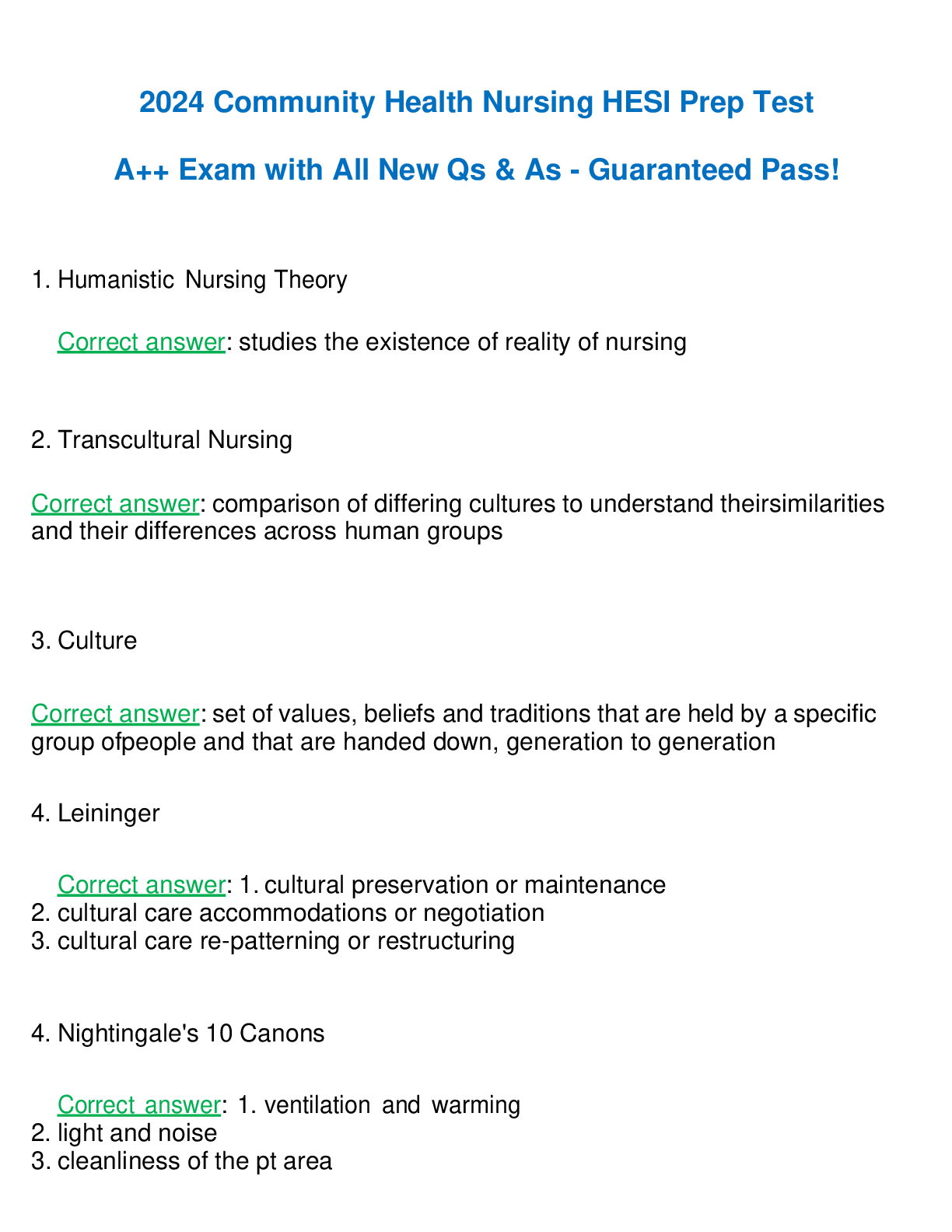
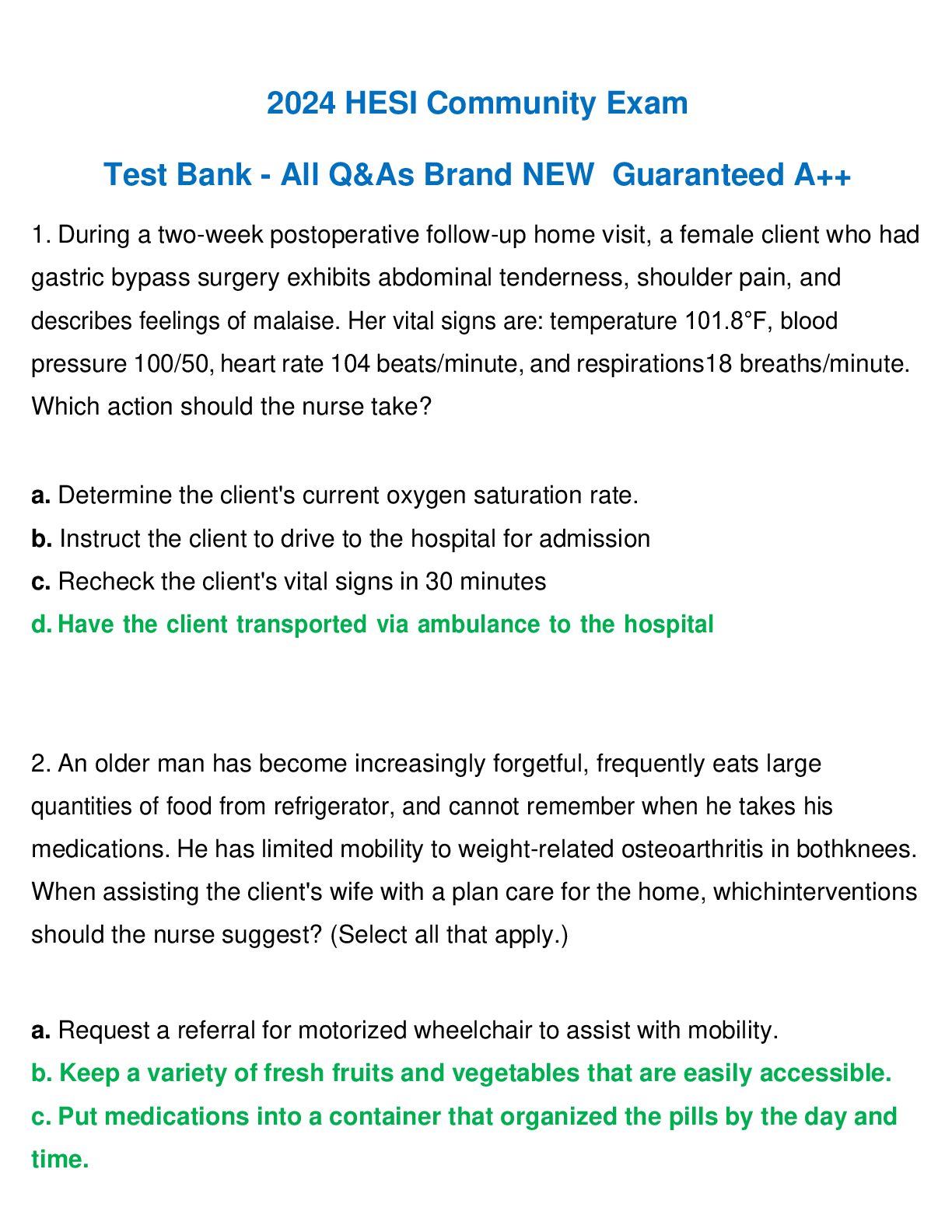

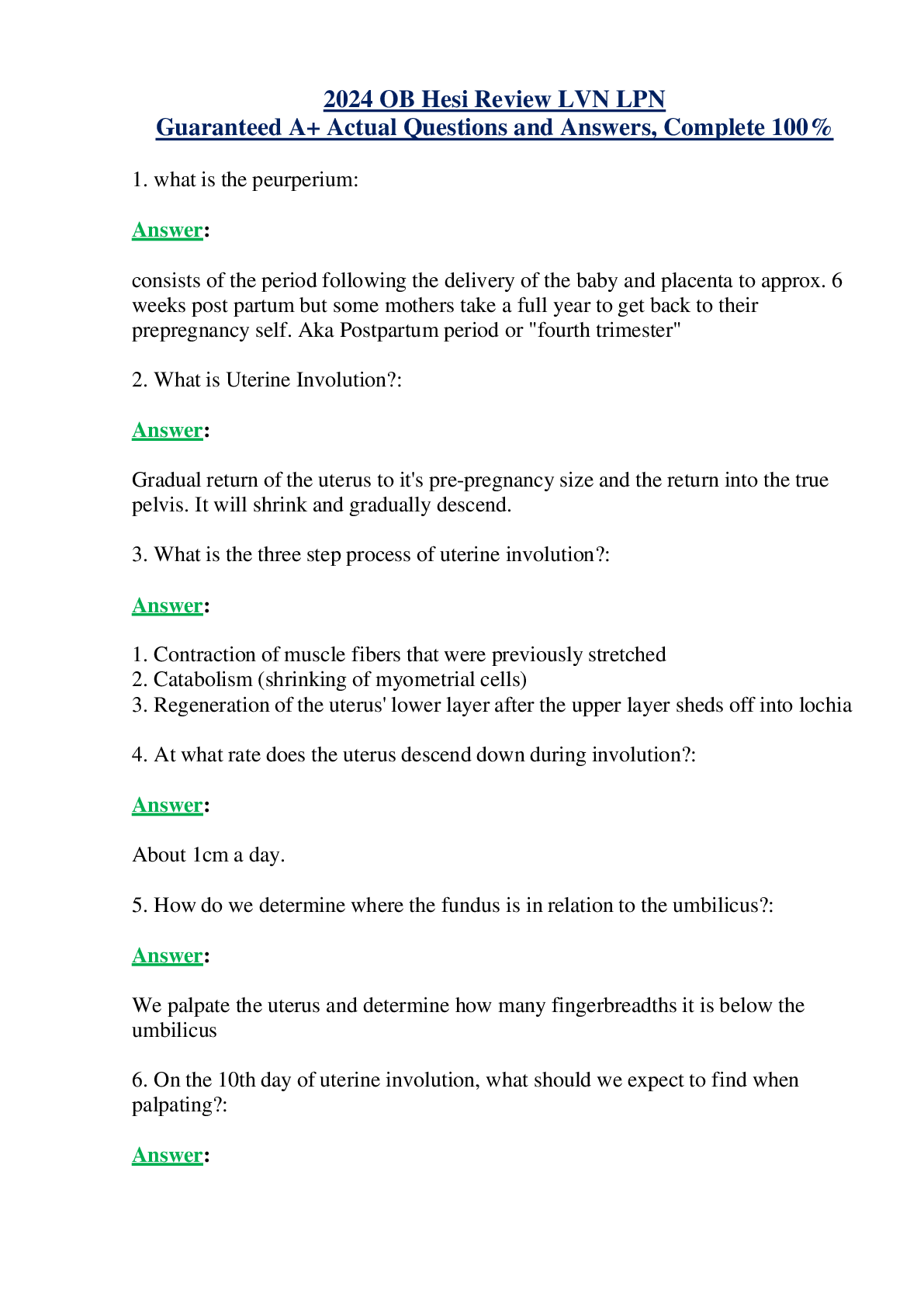
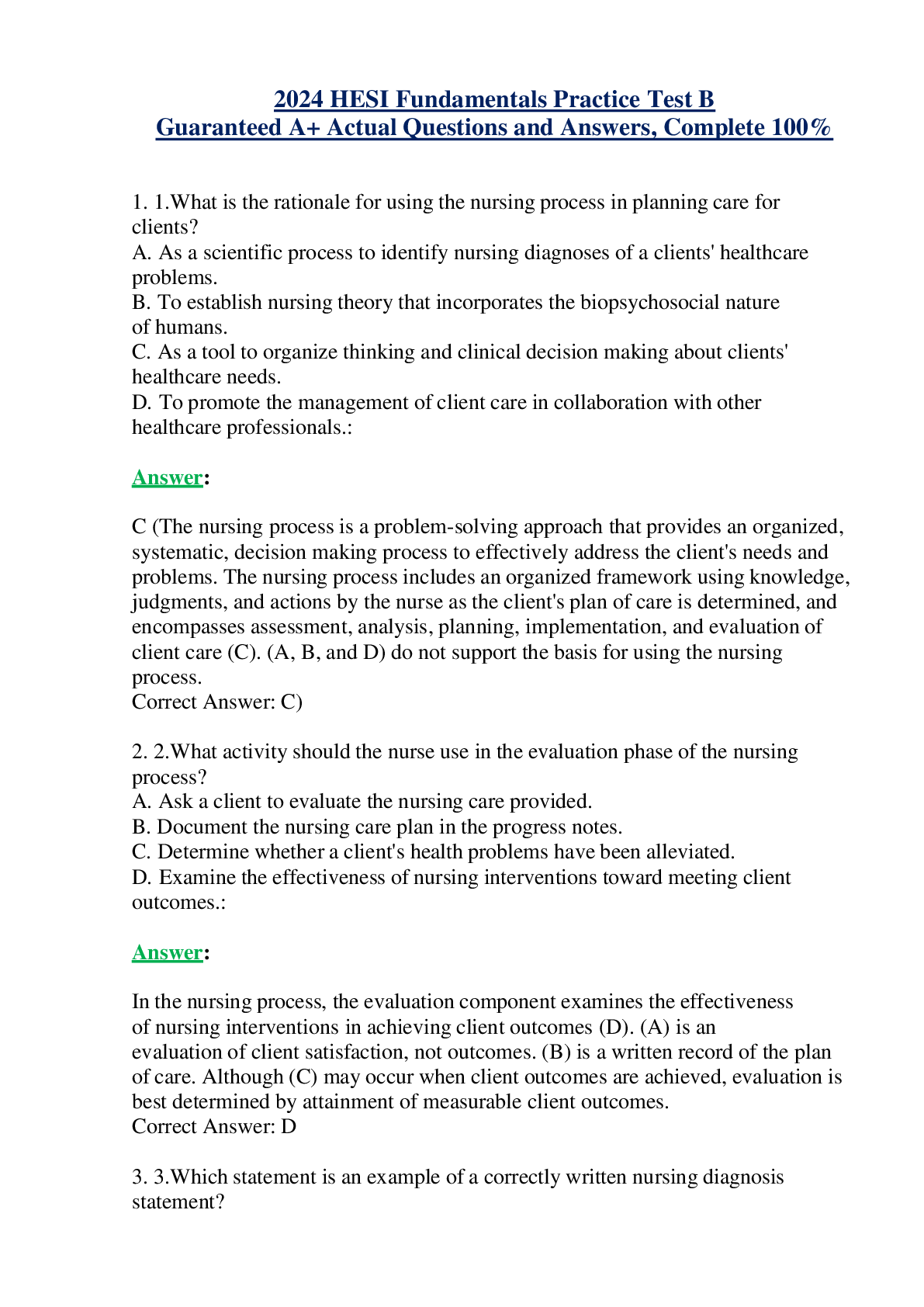
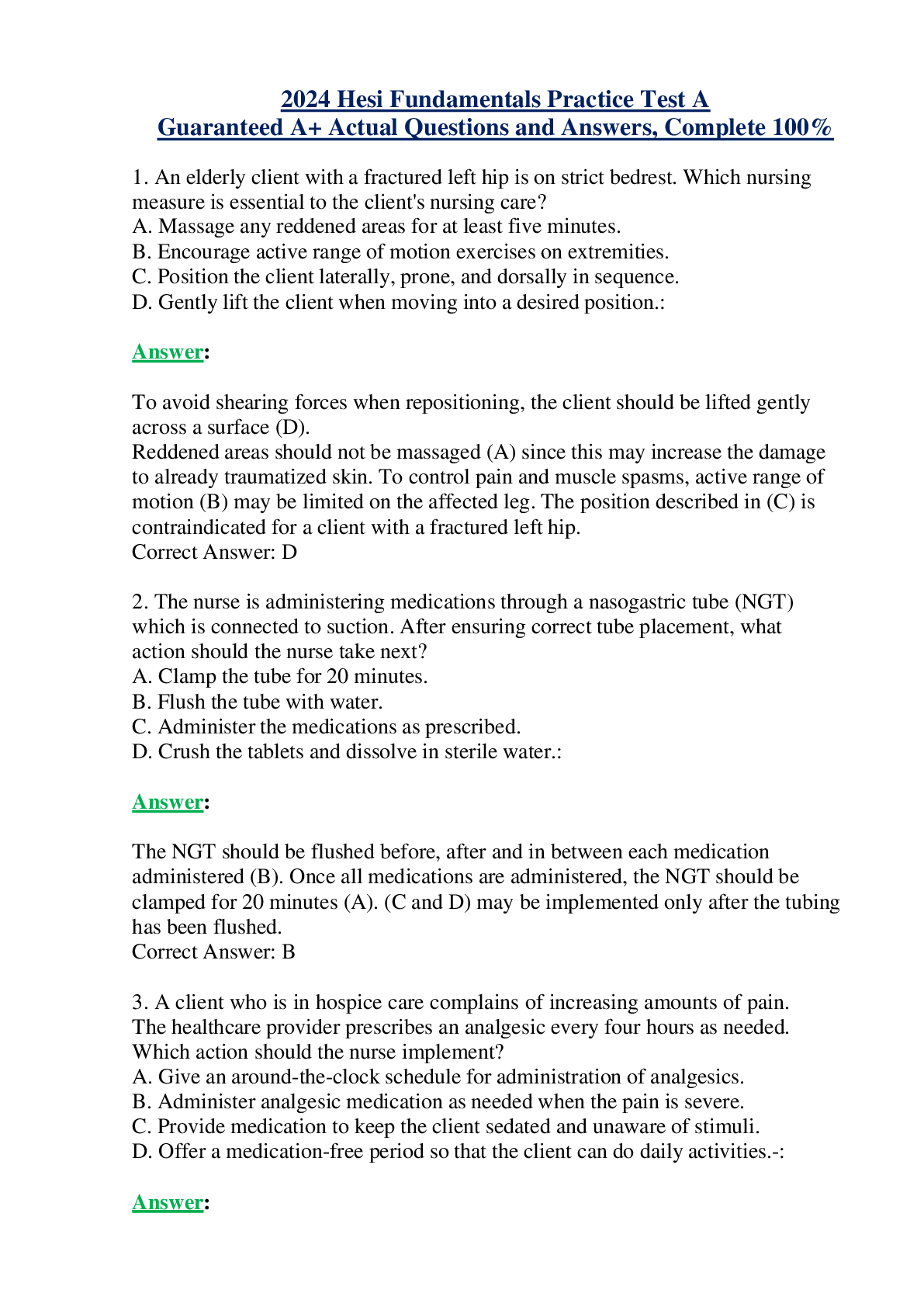
.png)

